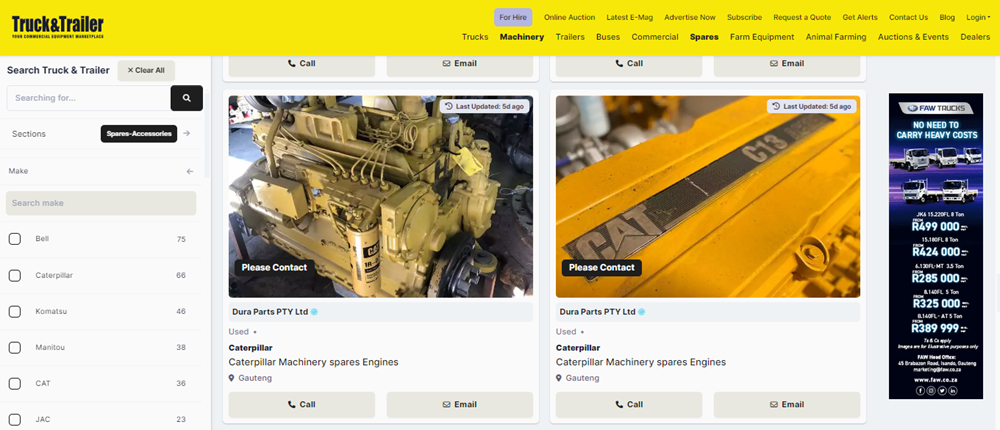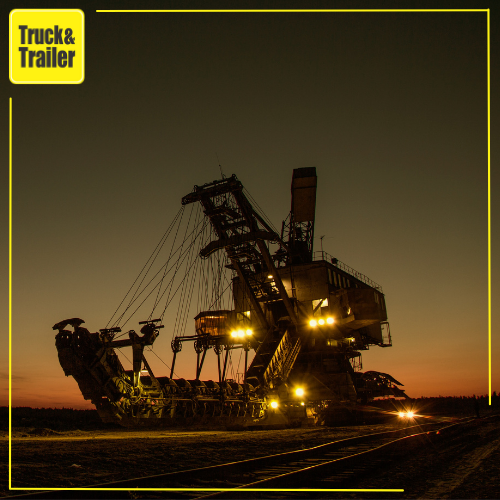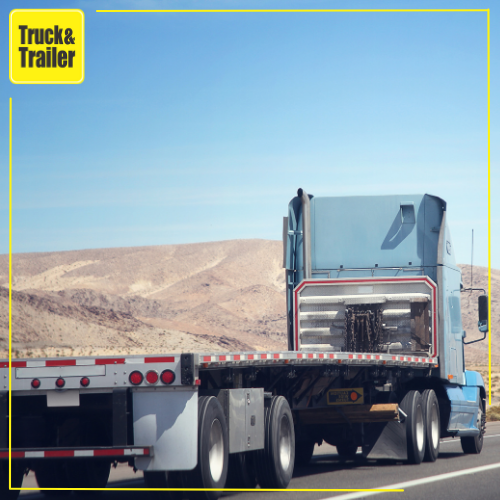When it comes to heavy-duty construction machinery like bulldozers, one of the critical factors influencing performance is the engine power. Determining the appropriate engine power for a dozer is a nuanced process that involves considering various factors. Let us delve into the key considerations that play a pivotal role in selecting the right engine power for a dozer, ensuring optimal performance and efficiency on construction sites. Are you in need of Plant and Machinery for hire? Explore Truck & Trailer's hiring page for a convenient solution. Specify the plant or commercial equipment you're looking for, and verified businesses will reach out to you with available options.
 Photo by Brgfx on Freepik
Photo by Brgfx on Freepik
Understanding the Basics:
Engine power is the lifeblood of any bulldozer, defining its capability to handle different tasks on construction sites. The right engine power ensures that the dozer can efficiently navigate through various terrains, push substantial loads, and carry out tasks with precision. The process of determining the appropriate engine power involves a careful evaluation of the machine's intended applications, operating conditions, and the type of material it will be handling.
Key Factors to Consider:
1. Application and Intended Use:
The first step in determining the appropriate engine power for a dozer is understanding its intended applications. Different construction projects require varying levels of power. For instance, a dozer used for grading and leveling may not need as much power as one employed for heavy-duty earthmoving or mining activities.
Read: The Versatility of Dozers in Construction Projects: Applications
2. Terrain and Operating Conditions:
The nature of the terrain plays a crucial role in selecting the right engine power. A dozer operating in hilly or rough terrains will require more power to navigate and handle the additional load. Similarly, the operating conditions, such as temperature and altitude, can impact the engine's performance.
3. Type and Weight of Material:
The type and weight of material the dozer will be handling are significant considerations. Heavy materials like rocks and dense soil require more power to push and move efficiently. The dozer's engine must be capable of generating enough torque to handle the specific material it will encounter.
4. Size and Weight of the Dozer:
The size and weight of the dozer itself influence the required engine power. Larger dozers generally need more powerful engines to ensure adequate performance. It's crucial to strike the right balance between size, weight, and engine power to achieve optimal efficiency.
5. Fuel Efficiency and Emissions:
In today's environmentally conscious construction industry, fuel efficiency and emissions play a crucial role. It's essential to consider engines that not only provide the necessary power but also adhere to emission standards and offer fuel efficiency, contributing to sustainable and cost-effective operations.
6. Manufacturer Specifications:
Consulting the manufacturer's specifications and guidelines is a fundamental step. Each dozer model is designed with specific engine power recommendations based on extensive testing and analysis. Manufacturers provide detailed information to guide users in selecting the most suitable engine for their specific needs.

Choosing the Right Engine:
After a comprehensive analysis of the factors mentioned above, the next step is to choose the engine that aligns with the identified requirements. Modern dozers often come with advanced engine technologies, including electronic controls and automatic transmission systems, enhancing overall performance and efficiency.
Interesting Facts about Dozers:
- Origin and Evolution:
Bulldozers, often referred to as dozers, have a fascinating history. The term "bulldozer" originated from the combination of "bull," a reference to the powerful nature of the machine, and "doze," which implies pushing soil. The first hydraulic dozer was introduced in the early 1920s, revolutionising the construction industry.
- The World's Largest Dozer:
The title of the world's largest dozer belongs to the Komatsu D575A-3 Super Dozer. This colossal machine weighs around 152 tons and boasts an impressive 1,150 horsepower engine. It's primarily used in large-scale mining and earthmoving projects.
- Pushing Power:
Dozers are renowned for their incredible pushing power. The front blade, also known as the dozer blade, can be used for various tasks, including leveling, grading, and pushing materials. The force exerted by a dozer's blade is substantial, making it a versatile and indispensable tool in construction.
- Different Types of Blades:
Bulldozers come with different types of blades, each designed for specific applications. Straight blades are ideal for fine grading and leveling, while U-blades are effective for carrying and spreading materials. Angle blades, with their curved shape, are excellent for pushing soil to the side.
- Swamp Bulldozer:
In some specialised applications, swamp dozers are employed to navigate through challenging wetland environments. Equipped with wide tracks and additional features for buoyancy, these dozers can operate in marshy or swampy areas where regular construction equipment might struggle.
- GPS Technology Integration:
Modern dozers often come equipped with advanced technologies, including GPS systems. GPS integration allows for precise positioning and mapping, enhancing the accuracy of tasks such as grading and excavation. This technology not only improves efficiency but also reduces the margin of error in construction projects.
- Impressive Lifting Capability:
While primarily known for their pushing power, some of these machines have lifting capabilities as well. Multi-shank rippers, attached to the rear of the dozer, can penetrate and break up hard surfaces, making them suitable for tasks such as rock removal.
- Articulated Track Frames:
To improve maneuverability and stability, many modern dozers feature articulated track frames. These frames allow the tracks to flex, making it easier for the dozer to navigate uneven terrain while maintaining constant contact with the ground.
- Iconic Pop Culture Representation:
Bulldozers have become iconic symbols in pop culture, often depicted in movies and cartoons. Their powerful and robust appearance makes them synonymous with construction and earthmoving activities, contributing to their recognition worldwide.
Determining the appropriate engine power for a dozer is a critical aspect of optimising its performance on construction sites. By carefully considering the intended applications, operating conditions, material type, and other key factors, construction professionals can select a bulldozer with the right engine power to meet their specific needs. This not only ensures efficient operations but also contributes to cost-effectiveness and environmental sustainability in the construction industry. If you're in search of Plant and Machinery for hire, your solution lies on Truck & Trailer's rental page. Simply specify the plant or commercial equipment you require, and verified businesses will reach out to you with available options.





